UPSC Exam > UPSC Notes > Geography for UPSC CSE > Cheat Sheet: Geomorphology
Cheat Sheet: Geomorphology | Geography for UPSC CSE PDF Download
Factors Controlling Landform Development
- Internal (Endogenetic): Tectonics, Earthquakes, Volcanism
- External (Exogenetic): Weathering, Erosion, Deposition, Mass Wasting
Exam Tip: Always show interrelation between internal and external forces in answer.
Endogenetic vs Exogenetic Forces
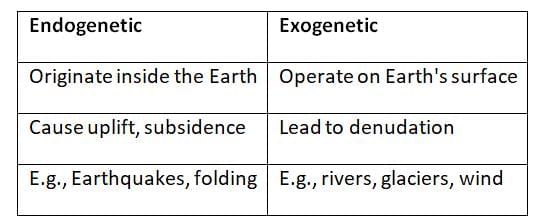
Origin & Evolution of Earth’s Crust
Layers of the Earth: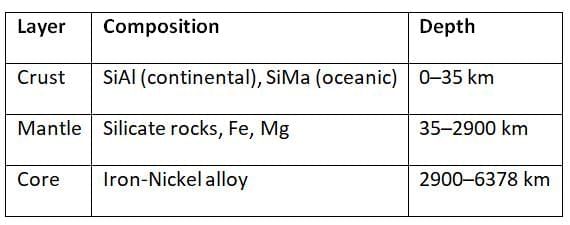
Fundamentals of Geomagnetism
Cause: Motion of molten iron in the outer core
Concepts:
- Magnetic Poles ≠ Geographic Poles
- Paleomagnetism: Key evidence for Plate Tectonics
Use in Plate Tectonics: Magnetic striping on ocean floor.
Physical Conditions of Earth’s Interior
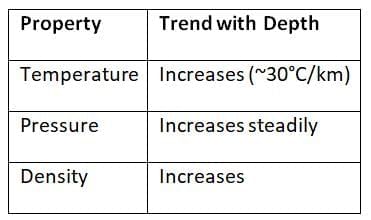
Geosynclines
A long, narrow, and shallow water depression where sediments accumulate and later form mountains.
Example: Tethys Geosyncline → Himalayan Orogeny
Continental Drift Theory
Alfred Wegener (1912)
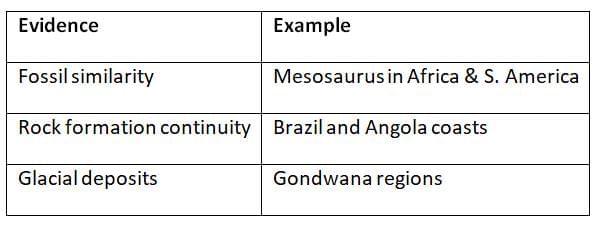
No mechanism → Later explained by Plate Tectonics
Isostasy
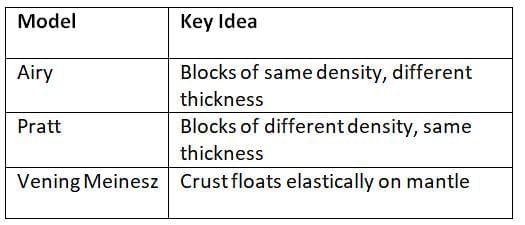
Plate Tectonics Theory
Key Components:
- Earth's lithosphere = 7 major + minor plates
- Driven by mantle convection currents

Recent Views on Mountain Building
- Mountains form at convergent boundaries
- Collision of continental plates (e.g., India-Eurasia → Himalayas)
- Subduction zones: Andes-type orogen
Volcanicity
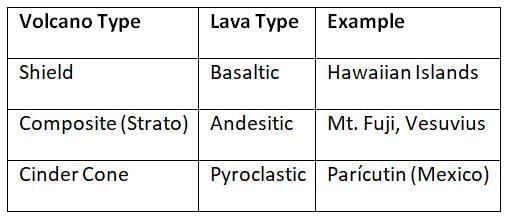
Earthquakes & Tsunamis
- Focus: Point inside Earth
- Epicentre: Point on surface
Measured by:
- Richter Scale (Magnitude)
- Mercalli Scale (Intensity)
Tsunamis: Caused by undersea quakes/displacement
- 2004 Indian Ocean Tsunami → Plate subduction (Indo-Australian under Eurasian Plate)
Geomorphic Cycles & Landscape Development

Denudation Chronology
- Sequence: Weathering → Erosion → Transportation → Deposition
- Landscapes often polycyclic
- Influenced by climate changes and base level fluctuations
Channel Morphology
Types of River Channels: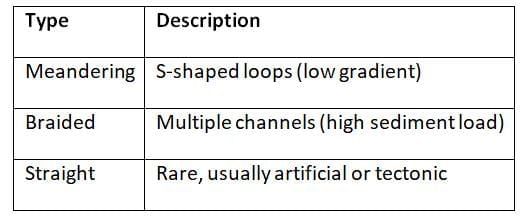
Erosion Surfaces
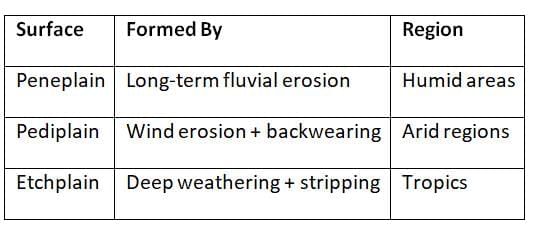
Slope Development
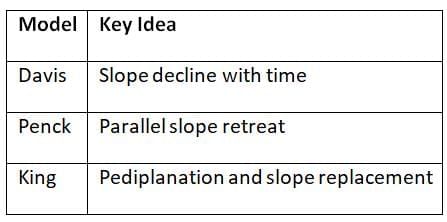
Applied Geomorphology
Use in:
- Urban planning
- Landslide & flood hazard mapping
- Infrastructure development (roads, dams)
Example: Avoiding fault zones during tunnel construction in Himalayas
Geomorphology in Economic Geology & Environment
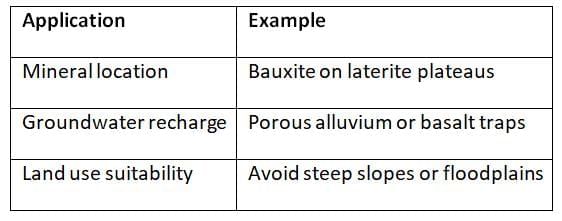
The document Cheat Sheet: Geomorphology | Geography for UPSC CSE is a part of the UPSC Course Geography for UPSC CSE.
All you need of UPSC at this link: UPSC
|
175 videos|624 docs|192 tests
|
FAQs on Cheat Sheet: Geomorphology - Geography for UPSC CSE
| 1. What is geomorphology and why is it important in the study of the Earth? |  |
Ans. Geomorphology is the scientific study of landforms and the processes that shape them. It explores the formation, evolution, and classification of various terrains on the Earth's surface. Understanding geomorphology is crucial for several reasons: it helps in assessing natural hazards like landslides and floods, informs land-use planning and management, aids in environmental conservation, and contributes to understanding climate change impacts on landscapes.
| 2. What are the primary processes that influence landform development in geomorphology? |  |
Ans. The primary processes influencing landform development include weathering, erosion, transportation, and deposition. Weathering breaks down rocks into smaller particles, erosion involves the removal of these particles by agents like water and wind, transportation moves the eroded material, and deposition occurs when the material settles in new locations, forming features like deltas and alluvial fans.
| 3. How do tectonic activities affect geomorphological features? |  |
Ans. Tectonic activities, such as earthquakes and volcanic eruptions, significantly alter geomorphological features. Earthquakes can uplift or depress landforms, leading to the formation of faults and folds. Volcanic eruptions can create new landforms, such as volcanic mountains and islands. Tectonic movements also influence erosion and sedimentation patterns, ultimately reshaping the landscape over time.
| 4. What role do glaciers play in geomorphology? |  |
Ans. Glaciers are powerful geomorphological agents that shape landscapes through processes such as glaciation, erosion, and deposition. They carve out U-shaped valleys, create fjords, and deposit moraines and drumlins. The movement of glaciers can significantly alter landforms and contribute to the development of unique geological features associated with cold environments.
| 5. How does human activity impact geomorphological processes and landforms? |  |
Ans. Human activities, including urbanization, deforestation, mining, and agriculture, have profound impacts on geomorphological processes. These activities can accelerate erosion, disrupt natural sediment transport, and lead to the alteration of drainage patterns. Additionally, land use changes can increase the risk of natural disasters, such as landslides and flooding, by destabilizing the landscape and modifying hydrological processes.
Related Searches





















